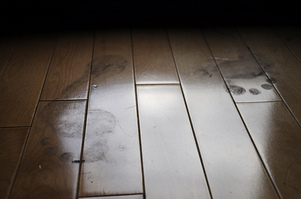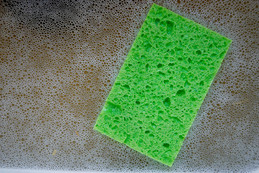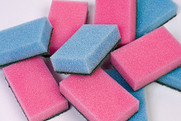
An aquarium can be a wonderful addition to your house. But they do need to be looked after so you can maintain a clean and healthy appearance. Not only will guests appreciate its cleanliness – your fish will thank you, too! Most people will recommend doing a 15-25% water change every week, but every now and then you should also do a complete water change and more thorough clean. Let’s look at some tips for going about this.
The last thing you want is a dirty tank. Performing a very thorough cleaning every now and then (in addition to weekly partial water changes and cleanings) will ensure that your fish have a comfortable environment to live in.
~ Jenny :)
- Empty out the fish. Take the fish out and place them in a suitable bowl or bucket, make sure it does not have any remnants of detergents in it, and if you have tropical fish, ensure the water has reached the correct temperature before you move the fish in. Place a board over the top of the bucket to stop the fish from jumping out.
- Empty the tank. Remove any plants you have carefully so that you don’t damage them. Take out ornaments and put them in a bucket of very hot water to soak, unless this may damage them. Scoop out the stones or sand at the base of the tank, and then remove the water by bailing or siphoning it away.
- Clean everything. Do not use detergent at any point as detergent will be hard to wash away completely (which would in turn damage the fish). Clean the inside of the tank with hot water and a sponge, don’t use anything abrasive as you will scratch the inside of the glass. Rinse the plants gently, throw away any leaves that are damaged, and gently rub algae off the leaves if it is there. Use a sieve and very hot water the clean all the sand or pebbles that cover the base of the tank. Clean ornaments with a toothbrush to get all the algae and dirt off them.
- Put it all back. Fill half the tank with water and add the bottom pebbles of sand back in. Arrange the plants and ornaments as you choose, and then fill the rest of the tank up, trying to get the temperature as near as possible to the right one for your fish. Add water-balancing chemicals if you need to, and then put the fish back in gently. The sooner you finish the process, the less stress you put on the fish.
The last thing you want is a dirty tank. Performing a very thorough cleaning every now and then (in addition to weekly partial water changes and cleanings) will ensure that your fish have a comfortable environment to live in.
~ Jenny :)





 RSS Feed
RSS Feed